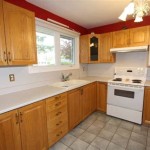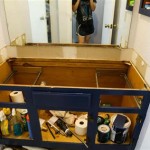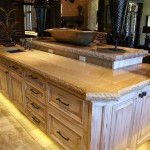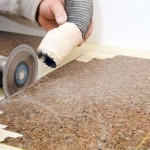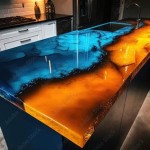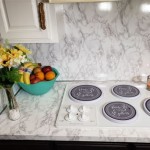Kitchen Countertop Materials: Pros and Cons
Selecting the appropriate countertop material is a crucial decision in kitchen design, balancing aesthetics, durability, functionality, and budget. The market offers a plethora of options, each possessing unique characteristics that cater to diverse needs and preferences. This article provides a comprehensive overview of several popular kitchen countertop materials, outlining their respective advantages and disadvantages to aid informed decision-making.
Granite: Natural Beauty and Durability
Granite is a natural stone renowned for its inherent beauty and resilience. Formed deep within the Earth’s crust over millions of years, each slab of granite exhibits unique patterns, colors, and variations, making it a distinctive addition to any kitchen. This natural variation ensures that no two granite countertops are exactly alike, contributing to its desirability.
Pros:
Granite is exceptionally durable and resistant to heat, scratches, and stains, assuming it has been properly sealed. Its heat resistance allows for placing hot pots and pans directly on the surface without causing damage. The hardness of the stone makes it difficult to scratch or chip under normal use. Properly sealed granite is also resistant to staining from common kitchen spills like coffee, wine, and oils.
The aesthetic appeal of granite is undeniable. Its natural variations in color and pattern provide a sophisticated and elegant look that complements various kitchen styles, from traditional to contemporary. The inherent beauty of the stone can elevate the overall design of the kitchen.
Granite is a long-lasting material that, with proper care and maintenance, can last for decades. Its durability and resistance to wear and tear make it a worthwhile investment in the long run.
Cons:
Granite is a porous material, requiring sealing to prevent staining and bacterial growth. The frequency of sealing depends on the type of granite and the sealant used. Failure to seal granite properly can lead to discoloration and the absorption of liquids, creating unsanitary conditions.
Granite can be an expensive countertop option, particularly for exotic or rare varieties. The cost includes the material itself, as well as fabrication and installation charges.
Although durable, granite can chip or crack if subjected to heavy impact. Dropping heavy objects on the countertop can cause damage that may require professional repair.
Granite is a heavy material, requiring sturdy cabinet support. The weight of the countertop must be considered during kitchen design to ensure the cabinets can adequately support the load.
Quartz: Engineered for Performance and Versatility
Quartz countertops, often referred to as engineered stone, are composed of approximately 90-95% ground quartz minerals combined with resins, polymers, and pigments. This manufacturing process results in a material that offers a consistent appearance and enhanced performance characteristics compared to natural stone.
Pros:
Quartz countertops are highly durable and resistant to scratches, stains, and heat. The non-porous surface makes them less susceptible to staining compared to granite, and they do not require sealing. They are also more resistant to chipping and cracking than many natural stone options.
Quartz offers a wide range of colors and patterns, including options that mimic the look of natural stone like marble and granite. The consistency of the color and pattern makes it easier to achieve a uniform look throughout the kitchen.
Due to its non-porous nature, quartz is easy to clean and maintain. Simple wiping with soap and water is typically sufficient to keep the surface clean and sanitary.
Cons:
While heat-resistant, quartz can be damaged by prolonged exposure to high heat. Using trivets or hot pads is recommended to protect the surface from scorching.
Quartz can be more expensive than some other countertop materials, although the cost has become more competitive in recent years.
The appearance of quartz, while consistent, may lack the natural variations and unique characteristics found in natural stone. Some individuals may prefer the natural imperfections and patterns of granite or marble.
While improving, some darker shades of quartz may show fingerprints and smudges more readily than lighter colors, requiring more frequent cleaning.
Solid Surface: Seamless and Repairable
Solid surface countertops are manufactured from a blend of acrylic or polyester resins and mineral fillers. This combination creates a non-porous material that can be seamlessly integrated, offering design flexibility and ease of maintenance.
Pros:
Solid surface countertops are non-porous, making them resistant to stains and bacterial growth. The surface does not require sealing and is easy to clean with soap and water.
Solid surface countertops can be seamed seamlessly, creating a continuous, uniform surface without visible joints. This seamless integration is particularly beneficial for large countertops or intricate designs.
Scratches and minor damages on solid surface countertops can often be repaired relatively easily. Light scratches can be buffed out, and deeper scratches can be filled and sanded to restore the surface.
Solid surface materials are available in a wide range of colors and patterns, including options that mimic the look of natural stone. The color runs throughout the entire thickness of the material, making scratches less noticeable.
Cons:
Solid surface countertops are not as heat-resistant as granite or quartz. Hot pots and pans should not be placed directly on the surface, as they can cause scorching or discoloration.
Solid surface countertops are more susceptible to scratches and dents than natural stone or quartz. While scratches can be repaired, the surface requires more careful handling to prevent damage.
While offering a wide range of colors and patterns, solid surface materials may not have the same depth and natural variations as natural stone.
Solid surface countertops can be more expensive than laminate options, but typically less expensive than granite or quartz.
Laminate: Budget-Friendly and Versatile
Laminate countertops are constructed by bonding a thin layer of decorative laminate to a particleboard or MDF core. This construction method makes laminate an affordable and versatile option for kitchen countertops.
Pros:
Laminate is one of the most affordable countertop materials available. This makes it a popular choice for budget-conscious homeowners or for rental properties.
Laminate countertops are available in a vast array of colors, patterns, and textures, including options that mimic the look of natural stone, wood, and other materials. This extensive selection allows for matching the countertop to various kitchen design styles.
Laminate countertops are relatively easy to clean with soap and water. The smooth surface is resistant to staining and bacterial growth.
Cons:
Laminate countertops are not as durable as natural stone, quartz, or solid surface materials. They are susceptible to scratches, dents, and chips.
Laminate is not heat-resistant and can be easily damaged by hot pots and pans. Using trivets or hot pads is essential to protect the surface.
Once damaged, laminate countertops are difficult to repair. Scratches, dents, and chips are often permanent and may require replacement of the entire countertop.
Laminate countertops are not waterproof and can be damaged by prolonged exposure to moisture. Spills should be cleaned up promptly to prevent water from seeping into the core material.
Seams are visible in laminate countertops, which can detract from the overall aesthetic. These seams are also potential entry points for moisture.
Butcher Block: Warmth and Functionality
Butcher block countertops are made from strips of hardwood glued together to form a solid surface. This material adds warmth and a natural aesthetic to the kitchen, while also providing a functional cutting surface.
Pros:
Butcher block countertops add a warm and inviting aesthetic to the kitchen. The natural wood grain and color variations create a unique and characterful surface.
Butcher block can be used as a cutting surface, eliminating the need for separate cutting boards. However, dedicated cutting boards are often recommended to maintain the countertop's appearance.
Scratches and minor damages on butcher block countertops can often be sanded down and refinished to restore the surface.
Cons:
Butcher block requires regular maintenance to prevent drying, cracking, and staining. Oiling the surface regularly helps to keep the wood moisturized and protected.
Butcher block is susceptible to water damage if not properly sealed and maintained. Spills should be cleaned up promptly to prevent water from seeping into the wood.
Butcher block can harbor bacteria if not properly cleaned and sanitized. Regular cleaning with a food-safe cleaner is essential to maintain a hygienic surface.
Butcher block is not as heat-resistant as natural stone or quartz. Hot pots and pans should not be placed directly on the surface.
The cost of butcher block can vary widely depending on the type of wood used and the thickness of the countertop.

Quartz Countertops Know About The Pros Cons

How To Choose Best Material For Your Kitchen Countertop

Quartzite Countertops Pros And Cons

How To Choose Best Material For Your Kitchen Countertop

Countertop Comparison Chart Granite Quartz Solid Surface

White Quartz Countertops Pros And Cons Lantern Lane Designs

How To Choose Best Material For Your Kitchen Countertop

The Pros And Cons Of Diffe Kitchen Countertop Materials Ranney Blair Weidmann

Countertops The Ultimate Guide Builders Surplus

5 Kitchen Countertop Materials Pros And Cons
See Also


